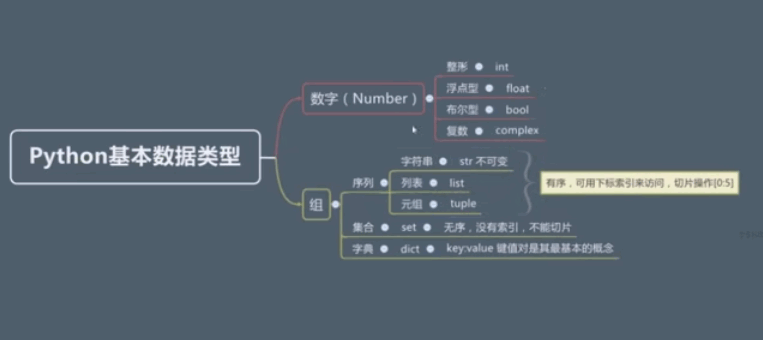来源于:视频《Python3入门与进阶》
Python第四章-组的概念与定义
列表list
type([1,2,3,4,5,6]) #list
type(["hello world",1,9]) #list
type([[1,2],[3,4],[True,False]]) #list
列表的索引、切片
["新月打击",“苍白之瀑”,“月之降临”,“月神冲刺”][0] #'新月打击'
["新月打击",“苍白之瀑”,“月之降临”,“月神冲刺”][3] #'月神冲刺'
["新月打击",“苍白之瀑”,“月之降临”,“月神冲刺”][0:2] #['新月打击','苍白之瀑']
["新月打击",“苍白之瀑”,“月之降临”,“月神冲刺”][-1:] #['月神冲刺']
面试小考点:
单一数字索引访问 得到的是str
用冒号:索引,哪怕是一个元素,得到的也是list
元组tuple
功能:创建一系列不可修改的元素
(1,2,3,4,5) #(1, 2, 3, 4, 5) #tuple
(1,'-1',True) #(1, '-1', True)
(1,2,3,4)[0] #1
(1,2,3,4)[0:2] #(1, 2)
(1,2,3)+(4,5,6) #(1, 2, 3, 4, 5, 6)
(1,2,3)*3 #(1, 2, 3, 1, 2, 3, 1, 2, 3)
小知识点
type((1)) #int 把括号视为运算优先 ,没有当做元组标志
type((1,)) #tuple
type(()) #tuple 表示空的元组
str,list,tuple 序列
共有的操作:索引 、切片
3 in [1,2,3,4,5,6] #True
10 in [1,2,3,4,5,6] #False
len([1,2,3,4,5,6]) #6
len("hello world") #11
max([1,2,3,4,5,6]) #6
min([1,2,3,4,5,6]) #1
集合set特点:无序,不重复
type({1,2,3,4,5,6}) #set
{1,2,3,4,5,6}[0] #会报错,因为集合set是无序的
{1,2,3,4,5,6}[0:2] #会报错,因为set不支持切片操作
{1,1,2,2,3,3,4,4} #{1,2,3,4} 因为set是不重复的
{1,2,3,4,5,6} - {3,4} #差集 {1,2,5,6}
{1,2,3,4,5,6}&{3,4} #交集{3,4}
{1,2,3,4,5,6} | {3,4,7} #并集{1,2,3,4,5,6,7}
type(set()) #set 定义空的set
字典dict
字典是一种集合set,因此用花括号,并且无序
{'Q':'新月打击','W':'苍白之瀑','E':'月之降临','R':'月神冲刺'}['Q'] #'新月打击'
#key的类型必须是 不可变类型 int str tuple
#value的类型是 任意的 str int float set list dict
type({}) #dict 空的花括号代表空的字典
type(set()) #代表空的集合
总结:时间的力量是不可抗拒的,还是要勤看。
